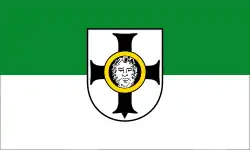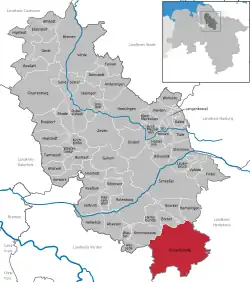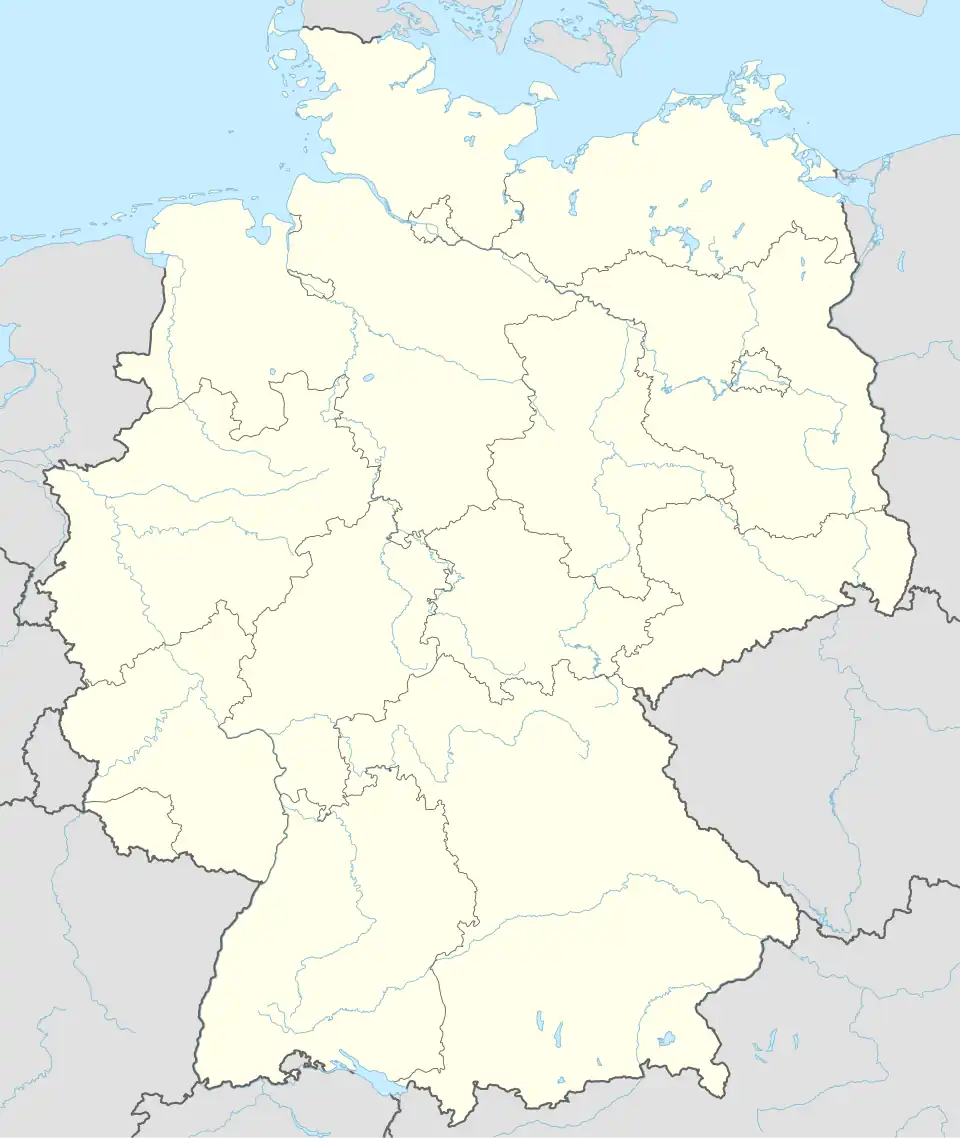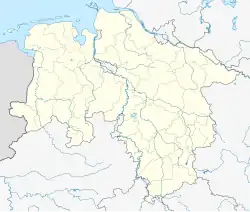Visselhövede
Visselhövede | |
|---|---|
 Flag  Coat of arms | |
Location of Visselhövede within Rotenburg (Wümme) district  | |
 Visselhövede  Visselhövede | |
| Coordinates: 52°58′N 9°35′E / 52.967°N 9.583°E | |
| Country | Germany |
| State | Lower Saxony |
| District | Rotenburg (Wümme) |
| Government | |
| • Mayor (2021–26) | Gerald Lutz[1] (Ind.) |
| Area | |
• Total | 159.2 km2 (61.5 sq mi) |
| Elevation | 70 m (230 ft) |
| Population (2023-12-31)[2] | |
• Total | 9,457 |
| • Density | 59/km2 (150/sq mi) |
| Time zone | UTC+01:00 (CET) |
| • Summer (DST) | UTC+02:00 (CEST) |
| Postal codes | 27374 |
| Dialling codes | 04262 |
| Vehicle registration | ROW |
| Website | www.visselhoevede.de |
Visselhövede (German pronunciation: [ˌfɪsl̩ˈhøːvədə] ⓘ) is a town in the district of Rotenburg in Lower Saxony, Germany. Nearby towns include the district capital Rotenburg, Walsrode and Verden. Larger cities within a 100 km radius are Bremen, Hanover and Hamburg. On 30 April 2024 Visselhövede had 10.116 inhabitants.[3]
Visselhövede belonged to the Prince-Bishopric of Verden, established in 1180. In 1648 the Prince-Bishopric was transformed into the Principality of Verden, which was first ruled in personal union by the Swedish Crown - interrupted by a Danish occupation (1712–1715) - and from 1715 on by the Hanoverian Crown. The Kingdom of Hanover incorporated the Principality in a real union and the Princely territory, including Visselhövede, became part of the new Stade Region, established in 1823.
Sights
The most famous building is St. Johannis-Kirche, a protestant church named after John the Baptist. It was built of bricks in a gothic style and consecrated in 1358.[4] The wooden clock tower measuring 23 metres in height was built in 1799.[5] The church houses various masterpieces of art, e.g. a baroque altar dating from 1771 and a baroque organ from 1779, a baptismal font and wall paintings from the Middle Ages and a pulprit dating from 1641.[6] The source of river Vissel can be visited in a small park behind the church. The Town Hall in the Market Place was built around 1796.[7] In Burgstrasse, the oldest street in town, the Heimathaus, a half-timbered house which was renovated in 1999, is worth a visit.[8] It is the cultural centre of Visselhövede.
Bürgerpark Visselseen is a public park with four lakes where two historical store houses, which had been dismantled at the former site, were reconstructed in 2006.
-
 Main Street and clock tower
Main Street and clock tower -
 Protestant Church with clock tower
Protestant Church with clock tower -
 Market Place with Town Hall
Market Place with Town Hall -
 Source of River Vissel
Source of River Vissel -
 Reconstructed store houses
Reconstructed store houses -
 Cultural centre Heimathaus
Cultural centre Heimathaus -
 Lake in Bürgerpark Visselseen
Lake in Bürgerpark Visselseen -
 Railway station
Railway station
See also
References
- ^ "Direktwahlen in Niedersachsen vom 12. September 2021" (PDF). Landesamt für Statistik Niedersachsen. 13 October 2021.
- ^ "Fortschreibung des Bevölkerungsstandes auf Basis des Zensus 2022, Stand 31. Dezember 2023" (in German). Landesamt für Statistik Niedersachsen.
- ^ "Einwohnerzahlen". Stadt Visselhövede (in German). Retrieved 2024-10-10.
- ^ Hans Pusen: Harz, Hannover, Lüneburger Heide, p. 63, München 1972
- ^ "QR: Glockenturm der St. Johanniskirche". Stadt Visselhövede (in German). Retrieved 2024-10-10.
- ^ "Kirchen". Stadt Visselhövede (in German). Retrieved 2024-10-10.
- ^ "QR: Rathaus". Stadt Visselhövede (in German). Retrieved 2024-10-10.
- ^ "QR: Burgstraße". Stadt Visselhövede (in German). Retrieved 2024-10-10.
External links
